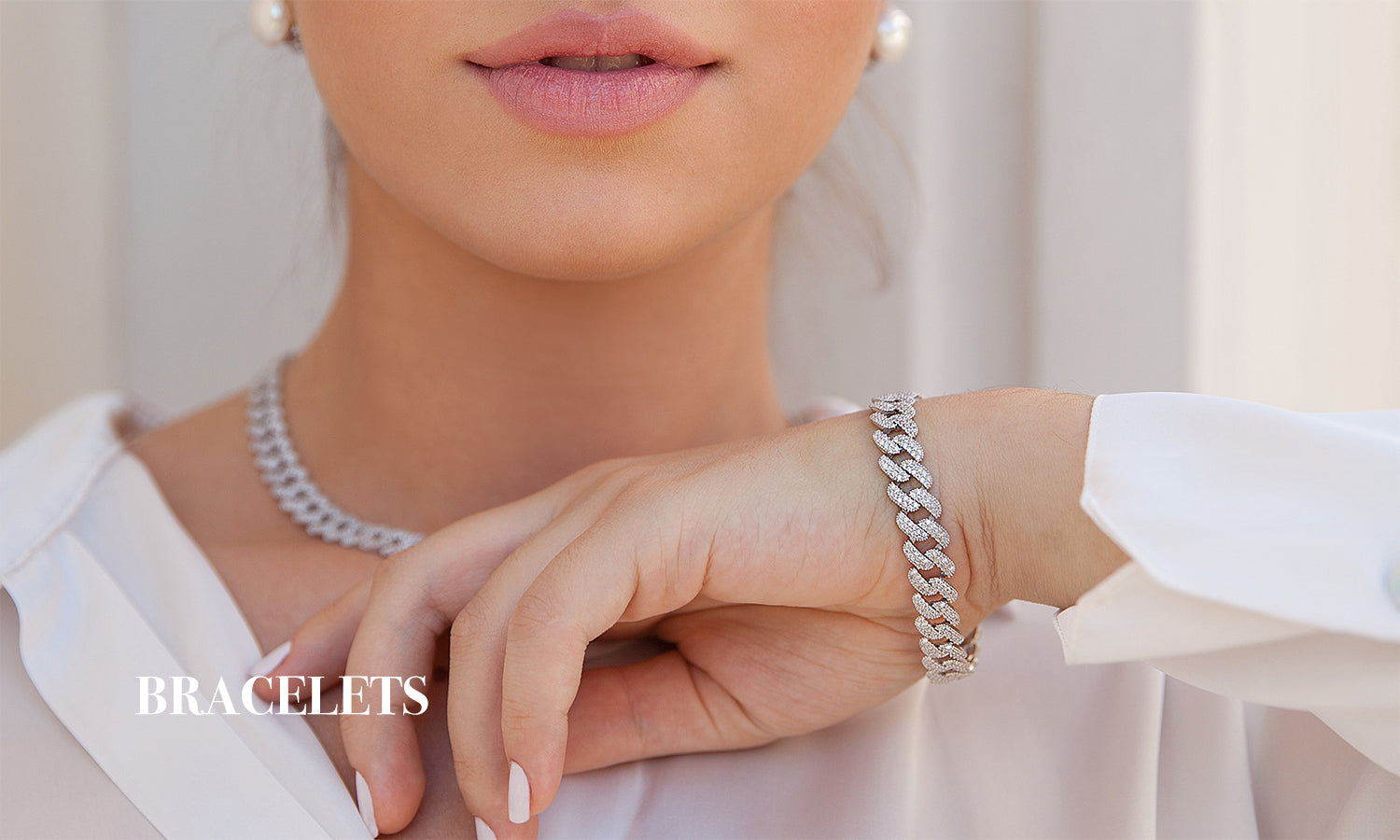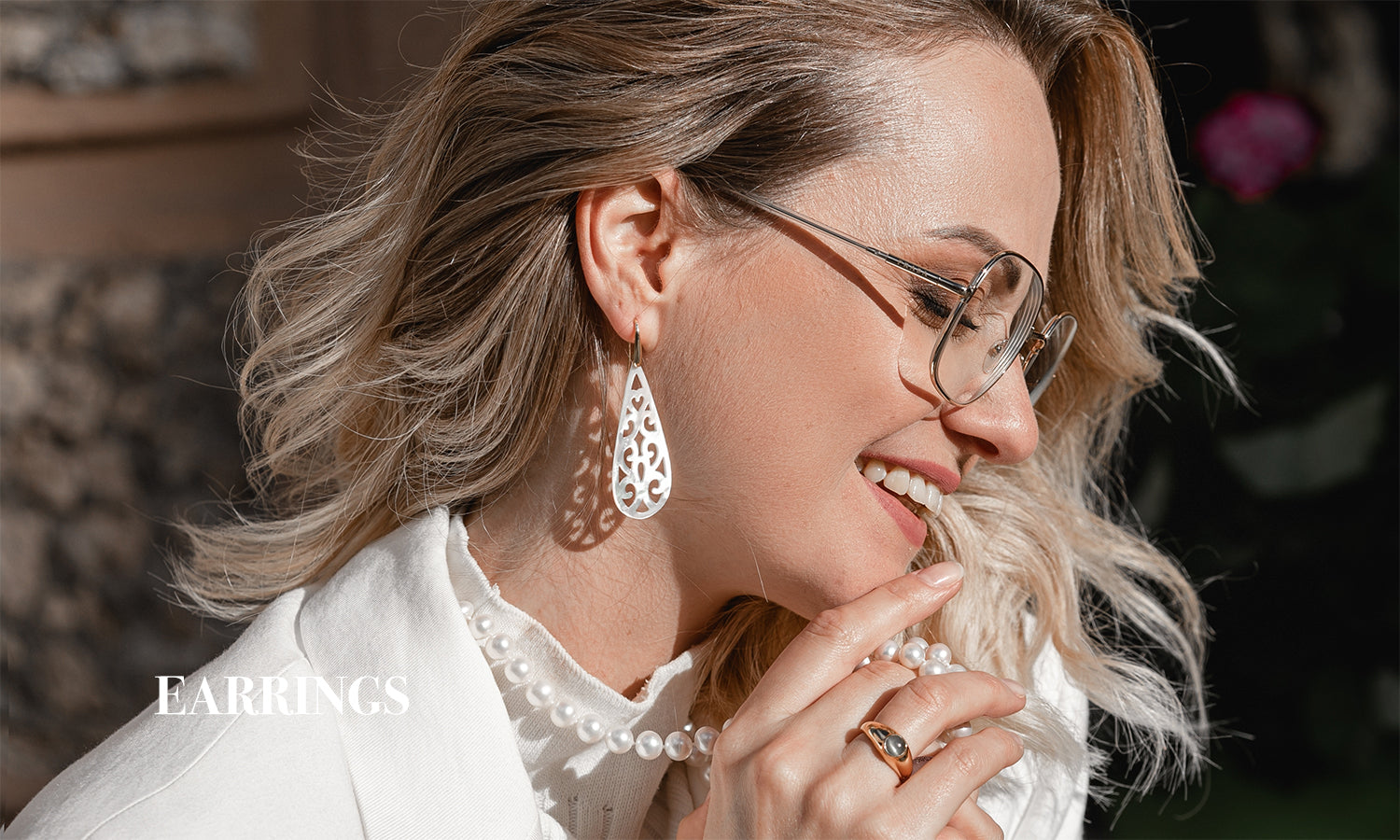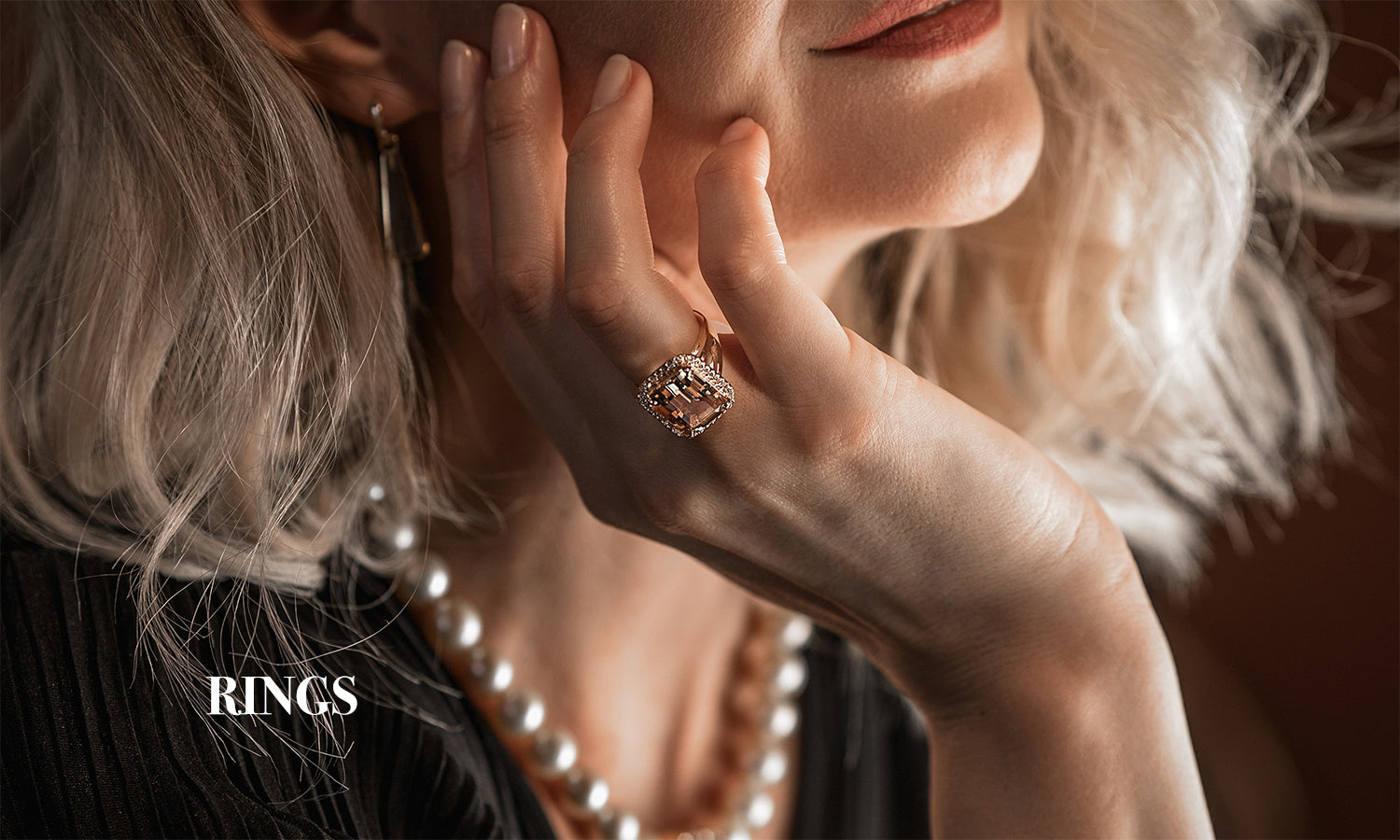Exploring the History of Diamonds
Diamonds have long been a symbol of wealth, luxury, and power. The history of diamonds is long and fascinating, full of mystery and intrigue. For centuries, they coveted royalty diamonds, and the wealthy used them to adorn their clothing and jewelry. The earliest known diamonds were discovered in India, dating back to approximately 800 B.C. It is believed that these diamonds were mined in the Golconda region of India.
Diamonds have been sought after for their beauty and brilliance throughout the ages. The Roman Empire was one of the first civilizations to recognize diamonds' value and incorporate them into their jewelry. In the Middle Ages, diamonds were used to decorate religious artifacts and were believed to possess special powers. By the Renaissance period, diamonds were highly sought after and were used to adorn the jewelry of the wealthy and powerful.
In the 1600s, diamonds began to be cut and polished for the first time. This process allowed for more intricate designs and increased the stone's sparkle. It also allowed diamonds to be set into jewelry and other objects, making them even more desirable.
In the 1700s, the diamond trade expanded and became more sophisticated. The famous gemologist, George Frederick Kunz, began to study diamonds and classify them based on their characteristics. He created the modern system of diamond grading, which we still use today. By the early 1800s, the diamond industry was booming, and diamonds were mined in South Africa and Brazil.
With the invention of the laser, diamond cutting and polishing began to become even more precise, allowing for the creation of intricate and beautiful designs. The modern diamond industry is highly regulated, and diamonds are graded according to strict standards, ensuring that only the highest quality stones are used in jewelry and other products.
In addition to their beauty and sparkle, diamonds have long been associated with power and prestige. In many cultures, diamonds are seen as a symbol of commitment and love and are often given as engagement rings. They have also been used as a currency, with the most valuable stones used to purchase goods and services.
The science of diamonds is equally fascinating. Diamonds are composed of carbon atoms arranged in a lattice structure, giving them unique properties. They are the most complex material known to man and can only be cut with other diamonds. They also have the highest refractive index of any material, meaning they can absorb and reflect light beautifully, creating their signature sparkle.
The symbolism of diamonds is also an essential part of their allure. They have long been associated with strength and endurance; in some cultures, they are believed to bring luck and protection. They have also been used to represent royalty and power and can be found adorning the crowns and jewelry of many kings and queens.
The sparkling allure of the world of diamonds is undeniable. From their long and fascinating history to their symbolism and science, diamonds are unique and beautiful. Whether looking for a symbol of love and commitment or a beautiful piece of jewelry, diamonds are sure to sparkle and shine in any setting.
No matter how you view them, diamonds will always symbolize luxury, power, and beauty.

https://www.planderful.com/products/bi-colour-classy-ring-for-women?_pos=5&_sid=0459d2090&_ss=r
Examining the Science Behind Diamonds
The science behind diamonds is complex and intriguing. Diamonds are composed of carbon atoms that are arranged in a lattice structure. This structure gives diamonds unique properties, such as hardness and refractive index. This article will explore the science behind diamonds and how it affects their beauty, strength, and value.
Diamonds are the most complex material known to man. This is due to their lattice structure, which is made of carbon atoms tightly bound together. The system allows for little to no space between the particles, making them extremely hard and nearly impossible to break. This is why diamonds are often used in industrial and construction applications, as they can withstand a great deal of wear and tear.
The refractive index of diamonds is also relatively high, making them incredibly sparkly. This is because diamonds can absorb and reflect light uniquely. The light is reflected out of the stone in a spectrum of colors, creating the signature sparkle that diamonds are known for. This is why diamonds are often used in jewelry and other products, as they can add a beautiful and eye-catching touch.
The color of diamonds is also an essential factor in determining their value. Colorless diamonds are the most desired, as they are rare and highly valued. Diamonds can come in a variety of colors, ranging from yellow to pink and even blue. The stone's color can affect its value, as specific colors are rarer and more sought after than others.
The clarity of diamonds is also crucial in determining their value. Clarity refers to the number of inclusions or imperfections that can be found in the diamond. The fewer inclusions a diamond has, the more valuable it is. Clarity is graded from flawless to included, with flawless diamonds being the most useful.
The carat weight of a diamond is also crucial in determining its value. Carat weight is measured in metric carats and refers to the importance of the diamond. The higher the carat weight, the more valuable the diamond is.
Finally, the cut of a diamond is also an essential factor in determining its value. The amount of a diamond refers to the shape and proportions of the stone, which affects its sparkle and beauty. Diamonds are typically cut into shapes, such as round, emerald, marquise, and pear. The better the cut of the diamond, the more valuable it is.
The brilliance of diamonds is also due to their unique structure. A diamond's lattice structure allows it to refract and reflect light, creating sparkles and flashes of color. This is known as the diamond's luster, which is why diamonds are so famous for jewelry.
In addition to their strength and brilliance, diamonds also possess several other unique properties. For one, diamonds are extremely heat resistant and can withstand temperatures up to 2200 degrees Celsius. Additionally, diamonds are highly resistant to scratches, although they can be cut and shaped with diamond tools.
The science behind diamonds is complex and fascinating. From their hardness and refractive index to their color, clarity, carat weight, and cut, diamonds are truly unique and beautiful gems. The combination of these factors makes diamonds so sought after and valuable. No matter how you view them, diamonds will always symbolize luxury, power, and beauty.

Recognizing the Symbolism of Diamonds
Diamonds have been a symbol of love and beauty for centuries. They are a symbol of commitment, wealth, and status. They are also a symbol of eternity and strength. As a result, diamonds have become a popular choice for engagement rings, wedding bands, and other jewelry.
The diamond is made up of several elements which have special meanings. The most common of these is carbon, the basis of all life on Earth. It symbolizes endurance, consistency, and strength, which is why it is often associated with relationships. The other elements, such as nitrogen and boron, are also essential and represent purity, clarity, and brilliance.
The color of a diamond is also important. The most prized color is white, which symbolizes innocence and purity. Other colors, such as yellow, pink, and blue, are popular and have various meanings. Yellow is the color of joy and friendship, pink is associated with love and romance, and blue is the color of trust and loyalty.
The shape of a diamond is also important. Round diamonds are a symbol of eternity and never-ending love, while princess-cut diamonds represent strength and power. Marquise diamonds are said to represent beauty and grace, while pear-shaped diamonds symbolize sophistication and elegance.
The clarity of a diamond is also important. Flawless diamonds are rare and highly prized, as they are said to be a symbol of perfection. The more flaws a diamond has, the less valuable it is.
The size of a diamond is also significant. Larger diamonds are often more valuable, as they are seen as a symbol of wealth and status. However, some people choose to go with smaller diamonds, as they are seen as a symbol of intimacy and love.
Finally, the cut of a diamond is also significant. The most popular cuts include the princess, round, and marquise. The princess cut is said to represent innocence and purity, while the round cut is associated with eternity and never-ending love. The marquise cut is often seen as a symbol of sophistication and elegance.
Diamonds have been a symbol of love and beauty for centuries and are still one of the most popular choices for engagement rings and other jewelry. They symbolize commitment, wealth, and status and can also represent eternity, strength, purity, clarity, and brilliance. A diamond's color, shape, clarity, size, and cut have special meanings, making them truly unique and special symbols of love.
Discovering the Appeal of Diamonds
Diamonds have long been known for their beauty, durability, and rarity. These unique characteristics make diamonds one of the most sought-after gemstones in the world. The appeal of diamonds lies in their unique properties, which make them the perfect choice for jewelry and other luxury items.
The most obvious appeal of diamonds is their beauty. Diamonds come in various sizes, shapes, and colors, the most common being white or clear. A diamond's beauty is often enhanced by its cut, determined by how it has been polished and faceted. Diamonds can also be treated to improve their color, making them even more attractive.
The second appeal of diamonds is their durability. Diamonds are the hardest substance known to man, scoring a 10 on the Mohs scale of mineral hardness. This makes diamonds extremely resistant to scratches, tarnishing, and other physical damage. In addition, diamonds are resistant to chemical and environmental damage. This makes them ideal for use in jewelry, as they retain their sparkle and beauty for many years.
The third appeal of diamonds is their rarity. Diamonds are formed deep within the Earth over millions of years, and only a small percentage of diamonds are suitable for use in jewelry. This makes diamonds valuable, as they cannot be easily replaced or reproduced.
Finally, diamonds have a timeless appeal. Diamonds never go out of style and can be worn with any outfit. Diamonds also symbolize love, commitment, and wealth, making them popular for engagement rings, wedding bands, and other special occasions.
The appeal of diamonds lies in their unique properties, which make them the perfect choice for jewelry and other luxury items. Diamonds are beautiful, durable, rare, and timeless, making them the ideal gemstone for expressing love, commitment, and wealth. Whether you are looking for the perfect engagement ring or a unique piece of jewelry for yourself, diamonds offer the ideal combination of beauty, durability, and rarity.

Unveiling the Value of Diamonds
With their timeless beauty, diamonds have been used to adorn everything from royal jewelry to engagement rings and even fashion accessories. But what exactly makes diamonds so valuable, and why do they continue to captivate us?
The answer lies in a combination of factors, ranging from their rarity and durability to their visual appeal. First and foremost, diamonds are scarce. They are formed deep within the Earth's surface and can only be mined from specific areas. This means that supply is limited, and as a result, diamonds are highly sought-after and expensive.
Additionally, diamonds are the hardest natural substance known to man. This makes them incredibly durable and resistant to damage, making them the perfect choice for jewelry. Their strength and longevity also add to their value, as diamonds can stay in excellent condition for decades or even centuries.
The beauty of diamonds is also an essential factor in their worth. Although all diamonds are made from carbon, no two are exactly alike. Every diamond is unique, and its individual characteristics—including clarity, color, and cut—determine its value. The better the quality of the diamond, the more precious it is.
Finally, diamonds have a long history associated with power and status. From ancient Egypt to Hollywood celebrities, diamonds have been used to signal success and wealth. This cultural significance is another element that contributes to the value of diamonds.
For these reasons, diamonds have held a special place in our hearts for centuries. They symbolize beauty, power, and wealth and will likely remain so for generations. Not only are they rare and durable, but they are also stunningly beautiful, making them the perfect choice for any jewelry or fashion accessory. The value of diamonds is undeniable and is one of the reasons why they continue to captivate us.
Understanding the Care of Diamonds
Cleaning and Maintenance
- Clean diamond jewelry regularly to keep it looking its best. Use a soft brush with warm soapy water and gently scrub the diamond jewelry. Rinse the jewelry in warm water and then pat it dry with a soft cloth.
- Cleaning with a toothbrush is not recommended as it can scratch the metal or the diamond itself.
- To remove dirt, grease, and oils from the diamond, use a liquid jewelry cleaner designed explicitly for diamonds.
- Ultrasonic cleaners are also a great way to clean diamond jewelry. Always make sure to read the instructions and follow them carefully.
- Do not use chemicals to clean diamond jewelry as it may damage the metal or the diamond itself.
- Have your diamond jewelry professionally inspected at least once a year to ensure it is in good condition.
- Take your diamond jewelry to a professional jeweler to clean and polish it.
Storage
- Store diamond jewelry in a soft cloth pouch or box.
- Avoid storing diamond jewelry in direct sunlight or near heat sources such as a stove or heater.
- Do not store diamond jewelry with other jewelry, as it can scratch the other jewelry.
- Store diamond jewelry separately from other jewelry pieces to avoid getting scratched or damaged.
- Make sure that the diamond jewelry is stored in a cool, dry place free from moisture.
Protection
- Keep diamond jewelry away from chemicals such as chlorine, bleach, and nail polish remover, as they can damage the metal or the diamond itself.
- Remove diamond jewelry before swimming, exercising, or engaging in any activity that can cause it to be damaged.
- Avoid exposing diamond jewelry to extreme temperatures, as this can cause the diamond to crack or become discolored.
- Wear diamond jewelry with care and avoid wearing it when doing activities that can cause it to become scratched or damaged.
- Use caution when wearing diamond jewelry around young children, as they may accidentally damage it.
- Consider having your diamond jewelry insured if lost or stolen.
Investigating the Future of Diamonds
The future of diamonds is a topic of much debate. As one of the most sought-after and expensive forms of jewelry, diamonds have long been associated with wealth and luxury. However, with the rise of lab-grown diamonds, the diamond industry is forced to reevaluate its marketing strategies and production processes. This paper will examine the current state of the diamond industry, the emerging technology of lab-grown diamonds, and the implications of these developments for the future of diamonds.
The diamond industry is currently dominated by natural diamonds mined from the Earth and cut into various shapes for jewelry. According to the World Diamond Council, the global diamond jewelry market is estimated to be worth $81 billion. Natural diamonds are prized for their rarity and beauty, and their prices vary widely depending on their quality and carat size. Despite their high cost, natural diamonds are famous for engagement rings and other jewelry items.
The emergence of lab-grown diamonds has created a new option for consumers. Lab-grown diamonds are made in a laboratory and are chemically, physically, and optically identical to natural diamonds. They are usually produced in much larger quantities than raw diamonds, allowing them to be sold at a fraction of the cost. While lab-grown diamonds still face some social stigma, their popularity is increasing as technology improves.
The emergence of lab-grown diamonds has had a significant impact on the diamond industry. Natural diamond producers are now faced with competing with a much cheaper alternative. To remain competitive, diamond producers are now focusing on marketing their diamonds as a symbol of love and commitment. They are also shifting their production processes to focus on higher quality diamonds, as lab-grown diamonds cannot match the quality of natural diamonds.
The future of diamonds is difficult to predict, as the industry is still in its infancy. Both natural and lab-grown diamonds will likely continue to be popular, as the two offer different advantages. Natural diamonds will remain the preferred choice for those looking for a truly rare and unique gemstone, while lab-grown diamonds will likely remain popular for their affordability and convenience. It is also likely that the technology behind lab-grown diamonds will continue to improve, allowing for even more cost-effective alternatives to natural diamonds.
No matter what the future holds, it is confident that diamonds will remain a symbol of luxury and love. The diamond industry will continue to evolve as producers and consumers adapt to the changing market conditions. As the technology behind lab-grown diamonds continues to improve, the diamond industry will be forced to innovate and find new ways to ensure the future of diamonds.

Diamonds in the Modern World
Diamonds are most commonly associated with jewelry, particularly engagement and wedding rings. In the United States, diamond engagement rings are the most popular choice, with the average cost of an engagement ring being around $6,000. It is estimated that at least 75 percent of wedding rings in the U.S. contain diamonds. Diamonds are also used in other types of jewelry, such as earrings, bracelets, and necklaces.
In addition to jewelry, diamonds are also used in various industrial applications. Diamonds are the hardest known material, so they are used in many cutting and drilling tools. They are also used as abrasives for grinding and polishing. Diamonds are also used in the production of computer chips, as well as in other electronic components. In addition, diamonds are used in the manufacture of watches, as the tiny diamonds that adorn the clock faces are often made of diamonds.
The diamond industry has grown significantly in recent years, with the global diamond market estimated to be worth more than $60 billion. The majority of diamonds come from mines in countries such as Botswana, South Africa, and Russia. The global diamond market is highly competitive, with various companies competing for market share, from large-scale mining operations to smaller companies specializing in cutting and polishing diamonds.
The demand for diamonds has also been driven by increased consumer spending on luxury items. As the middle class grows in many countries worldwide, there is an increasing demand for diamond jewelry and other luxury items. In addition, there is a growing trend of people buying diamonds for investment purposes, as diamonds are seen as a good store of value and a hedge against inflation.
Despite their perceived value and luxury, diamonds are not as rare as many think. According to the World Diamond Council, the global supply of diamonds is estimated to be around two billion carats, with a new carat of diamonds being mined every hour. This means that diamonds are pretty plentiful, and the prices of diamonds are determined more by market conditions than by the actual rarity of the diamonds.
Although diamonds have been used for luxury items and investment purposes for centuries, there is a growing trend of using diamonds for humanitarian and environmental goals. Ethically sourced diamonds are becoming increasingly popular, and a variety of companies have made commitments to support responsible sourcing and ensure that the diamonds they purchase have been mined and traded ethically. In addition, synthetic diamonds are becoming more popular as an alternative to mined diamonds, as they are more affordable and have a more minor environmental impact.
In conclusion, diamonds are still seen as a symbol of luxury and wealth in modern times, but they have also become much more accessible and are used in various ways. The diamond industry is a multi-billion-dollar business, and diamonds can now be used for multiple purposes, from jewelry to industrial applications. In addition, there is an increasing trend of using diamonds for humanitarian and environmental objectives, with the global diamond market becoming more focused on ethical sourcing and sustainable production methods.





